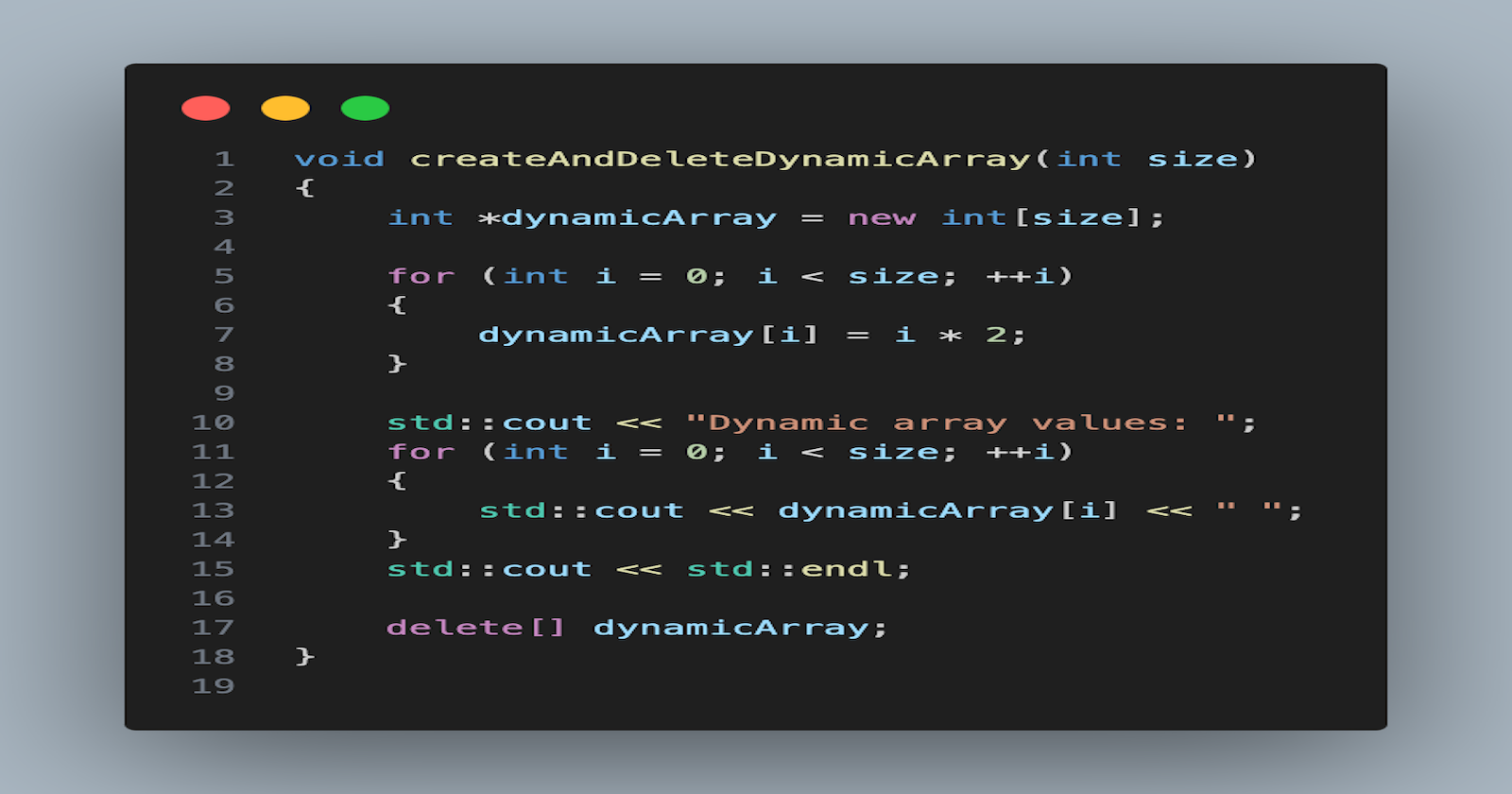🦷 The Toothbrush Principle: Why Deleting Dynamic Arrays is Essential 💻
 Animesh Kumar
Animesh Kumar
Introduction
Welcome to my first blog post! 🎉
Have you ever noticed how households tend to keep old toothbrushes in the stand instead of throwing them out? 🪥
Surprisingly, this habit mirrors a common mistake in programming: Creating dynamic arrays with heap memory and forgetting to delete them afterward. Just as old toothbrushes clutter the stand, these forgotten arrays clutter our memory, leading to a host of problems. Let's dive into why proper memory management is crucial and how we can keep our code clean. 🧼
What Are Dynamic Arrays?
Dynamic arrays are flexible data structures that allow us to allocate memory at runtime. Unlike static arrays, which have a fixed size determined at compile time, dynamic arrays can grow or shrink as needed, making them incredibly useful in various programming scenarios. 🔄
The Problem with Forgetting to Delete
When we create a dynamic array, the system allocates memory for it on the heap. If we forget to delete this array after we're done using it, the allocated memory isn't returned to the system. This oversight can lead to memory leaks, where memory that is no longer needed remains occupied, causing:
Memory Bloat: Unused memory accumulates, reducing the amount of available memory for other processes. 🛑
Performance Issues: As memory fills up, programs may run slower due to reduced available resources. 🐢
Application Crashes: In severe cases, running out of memory can cause the program to crash, leading to data loss and a poor user experience. 💥
The Importance of Memory Management
Proper memory management is akin to keeping your living space tidy. 🏡 Just as you wouldn't let old toothbrushes pile up in your bathroom, you shouldn't let unused dynamic arrays linger in your program's memory. By diligently deleting dynamic arrays when they're no longer needed, you ensure:
Efficient Resource Use: Freeing up memory allows other processes to use those resources, enhancing overall system performance. 📈
Smooth Operations: Properly managed memory prevents slowdowns and crashes, ensuring a smoother user experience. 🚀
Maintainable Code: Clean and well-managed code is easier to read, debug, and maintain over time. 🛠️
Practical Tips for Developers
Here are some best practices to help you manage dynamic arrays effectively:
Always Delete After Use: Make it a habit to delete dynamic arrays as soon as you're done with them. 🧹
Use Smart Pointers: In languages like C++, smart pointers (e.g.,
std::unique_ptr,std::shared_ptr) automatically manage memory, reducing the risk of leaks. 🤖Regular Code Reviews: Regularly review your code to identify and fix potential memory leaks. 🔍
Automated Tools: Utilize tools and compilers that can detect memory leaks and other issues. ⚙️
Conclusion
Just like old toothbrushes, forgotten dynamic arrays can clutter our space—our memory space, that is. By practicing good memory management and deleting dynamic arrays when they're no longer needed, we can keep our programs running efficiently and smoothly. Let's strive for clean code and a clutter-free digital environment! 🌟
Join the Conversation
Have you encountered memory leaks in your projects? How do you manage dynamic arrays? Share your thoughts and experiences in the comments below! 💬
Thank you for reading my first blog post! I hope you found it insightful. Stay tuned for more content on programming tips, development and best practices. Also. don't forget to subscribe to my newsletter so you never miss a blog!
Subscribe to my newsletter
Read articles from Animesh Kumar directly inside your inbox. Subscribe to the newsletter, and don't miss out.
Written by

Animesh Kumar
Animesh Kumar
I’m a software developer who loves problem-solving, data structures, algorithms, and competitive coding. I’ve a keen interest in product development. I’m passionate about AI, ML, and Python. I love exploring new ideas and enjoy innovating with advanced tech. I am eager to learn and contribute effectively to teams.